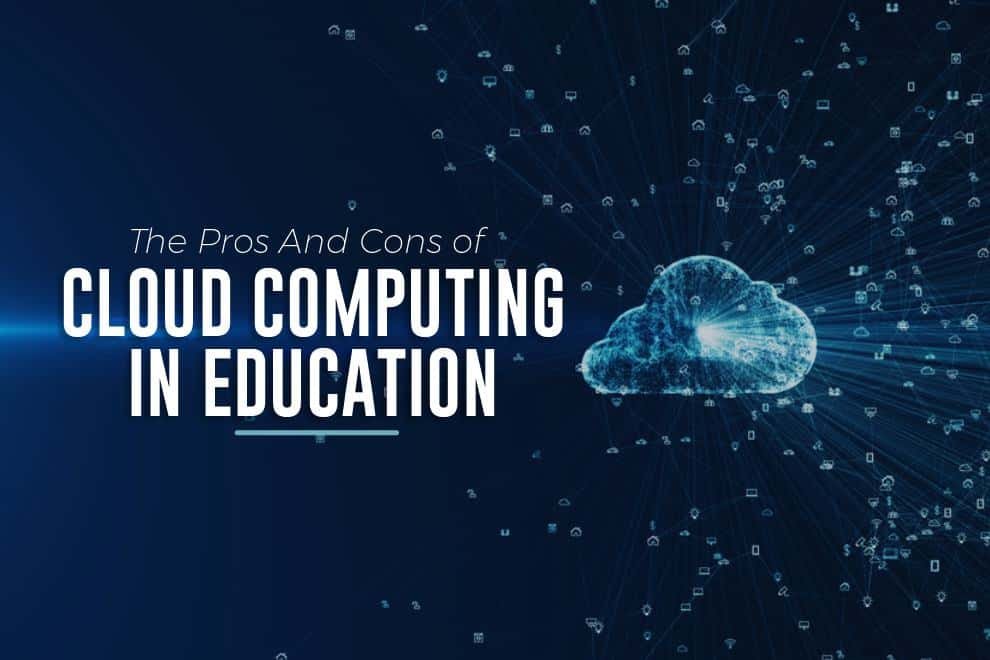Cloud-based platforms have become increasingly crucial in learning institutions with the recent push for remote learning. Essentially, educators endeavor to enhance productivity and better the overall learning experience by leveraging virtualization in cloud computing.
Because of this shift, institutions have migrated learning modules, faculty activities, students, and data storage to the cloud while ensuring strict data protection protocols. According to a survey by EdWeek, 80% of education technology leaders are using cloud-based software to save money and time.
But Why Shift To Cloud Computing?
Cloud computing provides students and educators with an infrastructure for advanced learning. Using this technology like Cloud Desktop i.e. Online Virtual Desktop, they can attend and conduct online classes and submit and check their papers worldwide. It also enables educators and students to send and receive work via the cloud and find remote opportunities to help students clear their assignments if they have a deadline.
However, there are always two sides to every coin with every technology, and cloud computing is no exception. Keep reading this article to discover the pros and cons of cloud computing in education, and go here for a trust cloud migration service.
Pro: Long-Term Cost Savings
One top benefit of cloud computing in education is cost reduction. Cloud migration helps institutions shift from high capital expenses to set monthly operating fees. These reduced monthly expenses come with fewer data storage costs, minimal data center maintenance, and fewer expenses for replacing old IT hardware. Migrating to the cloud is a cost-effective way of enhancing a learning environment while creating new educational opportunities.
Pro: Better Collaboration
Cloud computing offers seamless integration between the university and school departments through efficient file-sharing across multiple devices. This real-time collaboration supports student communication, creates teacher management portals, and powers remote learning virtual classes.
The cloud offers an easy way of creating an environment where teachers, students, and parents stay on the same page.
Pro: Easy Access And Resource Availability
Cloud computing class environments can fit as many students as those who wish to participate in a lesson. Cloud computing has no longer restricted professional and higher education to specific times and places.
Students can attend more online classes in their spare time, regardless of where they live. Teaching has become more meaningful with many online resources that fit almost every purpose.
Pro: Scalability
Scaling on-premise data centers can be expensive, but cloud computing helps reduce the costs associated with facility growth. When configured correctly, cloud computing can comfortably handle near-limitless numbers of users.
It outstretches its resources to meet the increased requirements during registrations and assignment submissions, then scales down to avoid wastage when the hectic period is over.
Pro: Better Infrastructure
Cloud computing provides an organized network for institutions to participate in the educational process. With more science centers, governmental bodies, and cultural establishments migrating online, services and resources have become more available to a broader audience.
With a single login, students can access online libraries and archives with a wealth of resourceful research material. Physically visiting these collections can get tricky, but cloud computing makes them readily available on a student’s computer screen.
Con: Up-Front Costs
Migrating to the cloud comes with a high up-front cost, even though it reduces costs in the long run. Training staff on the new system and its security best practices is another cost you must shoulder. The total cost of migration depends on the number of applications and services you want to move to the cloud.
Con: Ongoing Costs
Cloud computing attracts a monthly subscription cost for accessing or maintaining the service compared to building a paper archive. With a paper archive, you only invest once and catalog it without paying extra fees.
Con: Dependence On A Vendor
Changing your cloud service provider can be challenging. Once an institution chooses its cloud vendor, it will lock it in the contract. It affects how much money you spend and the quality and scope of services offered. Migrating to a new provider can affect the learning, teaching, and research processes.
Con: Some Security Issues Are A Concern
Cloud computing uses a virtual private network (VPN) to safeguard the content stored on it. When teachers and students sign in, VPN protects them from any malicious third party. VPNs are mostly secure, but some providers can still be compromised. Malicious actors can still find ways to steal vital data, such as test answers and sensitive personal information.
Con: High Digital Literacy
Some teachers, especially from older generations, can have a more significant learning curve with cloud technology, unlike students born in this generation. They might need to catch up to technological advances if cloud computing dominates the educational system.
Talented teachers who aren’t tech-savvy will have difficulty fitting in. Similarly, students from less technologically advanced environments will also have trouble matching the technical requirements of their studies.
Conclusion
Cloud computing has become an indispensable piece of technology. So much so that educational institutions have migrated their systems there. Cloud providers still have a long way to go to address serious issues such as data protection and security, but their benefits outweigh the drawbacks. In effect, every education system must up its digital and technical literacy to enrich its processes using cloud computing.
ALSO READ: 5 Advantages and Disadvantages of Artificial Intelligence you should read










